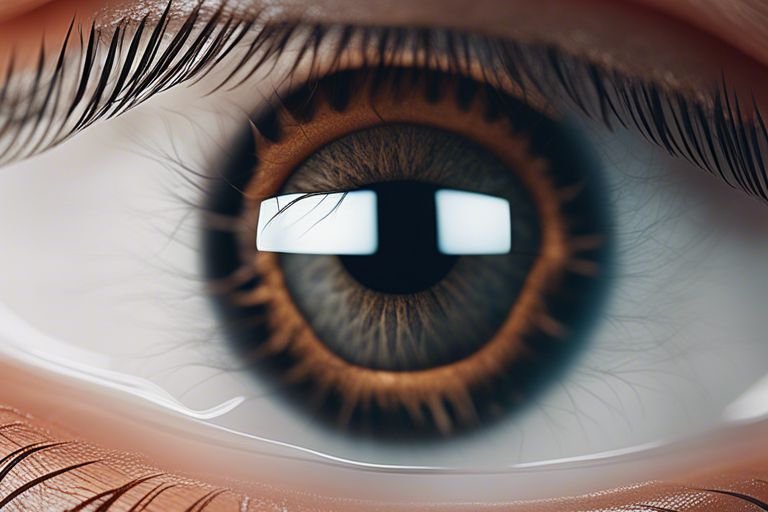Have you ever wondered about the enigmatic origins of eyelashes? These delicate, protective features of our eyes hold a fascinating secret. While commonly believed to be made of hair, eyelashes are actually distinct in composition. Comprising of proteins, eyelashes serve a crucial function in shielding our eyes from dust, debris, and sweat. Despite their small size, they play a significant role in keeping our eyes healthy and maintaining clear vision. Understanding the true nature of eyelashes can offer insights into their maintenance and care, ensuring optimal eye health for years to come.
Key Takeaways:
- Eyelashes are indeed made of hair: Despite their unique appearance, eyelashes are made of the same protein as hair – keratin.
- Eyelashes have a protective function: Eyelashes help to protect our eyes from debris, dust, and sweat, acting as a barrier.
- Eyelashes go through a natural growth cycle: Just like the hair on our heads, eyelashes go through a growth phase, a resting phase, and a shedding phase.
- Eyelashes enhance our eyes: Eyelashes are not just functional but also enhance the beauty of our eyes, making them appear bigger and more expressive.
- Eyelashes serve as a sensory function: Eyelashes are sensitive to touch and help to warn our eyes of potential danger, prompting them to close in a reflex action.
- Eyelashes vary in length and thickness: Different individuals have different eyelash lengths and thicknesses depending on genetics and other factors.
- Eyelashes require care: Just like our hair, eyelashes benefit from care such as gentle cleansing, avoiding harsh pulling, and using suitable products.
Understanding Hair and Keratin Structures
Definition of Hair
Hair is a filamentous biomaterial that grows from follicles found in the skin of mammals. It is primarily composed of keratin proteins, which give hair its strength and flexibility. Hair serves various functions, including protection from environmental elements, insulation, and sensory purposes.
Human hair consists of three layers: the cuticle, cortex, and medulla. The cuticle is the outermost layer that protects the hair shaft, while the cortex provides strength and determines hair colour and texture. The medulla, found in thicker hair types, adds an extra layer of protection.
Structure of Keratin Proteins
Keratin is a fibrous structural protein that forms the foundation of hair, nails, and the outer layer of skin in humans and other animals. It is rich in cysteine, an amino acid that forms disulphide bonds which give keratin its unique properties of strength and resilience.
The structure of keratin proteins is characterised by parallel coiled coils that provide stability and rigidity. These coiled coils are formed by twisting polypeptide chains, creating a strong, helical structure that makes keratin an essential component of various biological tissues.
When keratin proteins are disrupted, it can lead to issues such as hair breakage, loss of strength, and structural damage. Maintaining the integrity of keratin structures through proper care and nutrition is crucial for healthy hair and skin.

Eyelashes as a Unique Form of Hair
When we talk about hair, the first thing that comes to mind is usually the luscious locks on our heads. However, eyelashes are a unique and fascinating form of hair that deserves equal attention. Despite their small size, eyelashes play a crucial role in protecting our eyes from dust, debris, and sweat.
Growth Cycle of Eyelashes
Eyelashes have a shorter growth cycle compared to the hair on our scalp. The growth phase of eyelashes, known as anagen, lasts between 30 to 45 days, whereas the anagen phase for scalp hair can last anywhere from 2 to 7 years. This is one of the reasons why eyelashes have a limited length and do not grow as long as the hair on our heads.
Furthermore, eyelashes go through a longer resting phase called telogen, which can last up to 100 days. During this phase, the eyelashes are more prone to falling out, similar to how scalp hair sheds. However, the eyelashes’ growth and rest phases are synchronised, which means they do not all fall out at the same time, ensuring a consistent eyelash coverage for protection.
Morphological Differences from Scalp Hair
Unlike scalp hair, which grows as a single strand from a follicle, eyelashes grow in small groups of 2-4 hairs per follicle. This unique arrangement contributes to the thickness and density of our eyelashes. Additionally, eyelashes are much shorter and finer than scalp hair, reflecting their delicate nature and protective function.
Moreover, eyelashes have a different structure and composition compared to scalp hair. They are curved to help divert airflow and minimise evaporation of moisture from our eyes, providing an added layer of protection. The presence of sebaceous glands is also minimal in eyelashes, making them less oily than scalp hair.

Investigating the Biological Functions of Eyelashes
Protection from External Elements
Eyelashes, contrary to popular belief, serve a crucial purpose beyond just enhancing one’s facial features. One of the primary biological functions of eyelashes is to provide protection from external elements. These delicate hairs act as a natural barrier, shielding the eyes from dust, debris, and other harmful particles that may float in the air.
Additionally, eyelashes play a significant role in preventing sweat, water, and foreign objects from entering the eyes. This protective mechanism helps reduce the risk of eye infections and injuries, highlighting the importance of maintaining healthy and well-functioning eyelashes.
Role in Communication and Expression
Besides their protective function, eyelashes also contribute to communication and expression in humans. These hair structures frame the eyes, which are known as the windows to the soul, and play a crucial role in non-verbal communication. The fluttering of eyelashes, for example, can convey various emotions and messages without uttering a single word.
Furthermore, longer and fuller eyelashes are often associated with beauty and femininity, highlighting the cultural significance of eyelashes in enhancing facial expressions and overall attractiveness. Their role in communication goes beyond verbal cues, making them an integral part of human social interactions.
Eyelashes are not just a cosmetic feature but also serve as a vital part of our body’s defence mechanism, protecting our eyes from external hazards and aiding in non-verbal communication. Their dual functionality makes them a fascinating subject of study, shedding light on the mysterious origins and biological significance of these tiny yet essential hairs.

Comparative Analysis: Eyelashes Across Species
In this chapter, we will explore into the world of eyelashes by conducting a comparative analysis across different species. By exploring the similarities and differences between humans and other mammals, as well as examining evolutionary perspectives on eyelash development, we aim to unravel the mysterious origins of these delicate yet essential features.
| Humans | Other Mammals |
| Eyelashes are present to protect the eyes from debris and sunlight. | Eyelashes serve a similar purpose in other mammals, such as preventing dust and particles from entering the eyes. |
| Human eyelashes are typically shorter and more numerous compared to some mammals. | In other mammals, eyelashes can vary in length and density depending on the species. |
Similarities and Differences Between Humans and Other Mammals
When comparing humans and other mammals in terms of eyelashes, we find that both serve a protective function by shielding the eyes from potential harm. While human eyelashes are relatively shorter and more abundant, the length and density of eyelashes in other mammals can vary widely across species. This suggests that evolution has tailored eyelashes to suit the specific needs and environments of each species.
Evolutionary Perspectives on Eyelash Development
From an evolutionary standpoint, the development of eyelashes can be traced back to the need for eye protection in various environments. The presence of eyelashes in both humans and other mammals indicates a common evolutionary strategy to safeguard the delicate structures of the eyes from harm. Over time, eyelashes have evolved to fulfil this crucial role, adapting to the unique demands of different species.
Furthermore, the variation in eyelash length and density among different mammals highlights the diversity of evolutionary pathways that have led to the development of these protective features. By studying the evolutionary perspectives on eyelash development, we gain valuable insights into the adaptive nature of organisms and the intricate mechanisms that have shaped the natural world.
The Mysterious Origins – Are Eyelashes Truly Made of Hair?
Through exploring the topic of eyelashes and their composition, it becomes clear that eyelashes are indeed made of hair. The similarities in structure and growth patterns between eyelashes and hair found on the scalp are undeniable, pointing towards the conclusion that eyelashes are a type of hair. Though shorter and less pigmented than hair on the head, eyelashes serve a crucial role in protecting the eyes from debris and foreign particles. The mystery surrounding the origins of eyelashes may have been unravelled, but their importance in both function and aesthetics remains.
FAQ
Q: What are eyelashes made of?
A: Eyelashes are made of a protein called keratin, which is also found in hair and nails.
Q: Why are eyelashes important?
A: Eyelashes play a crucial role in protecting our eyes from dust, debris, and sweat.
Q: Do eyelashes grow back if they fall out?
A: Yes, eyelashes do grow back if they fall out, similar to hair on the scalp.
Q: How long does it take for eyelashes to grow back?
A: It typically takes around 6 to 8 weeks for eyelashes to grow back completely.
Q: How can I make my eyelashes grow longer and thicker?
A: You can promote eyelash growth by using specialised serums, eating a healthy diet rich in vitamins and proteins, and avoiding harsh rubbing of the eyes.
Q: Are eyelash extensions made of real hair?
A: Eyelash extensions are typically made of synthetic materials or natural fibres, not real human hair.
Q: Can you curl your eyelashes without a curler?
A: You can achieve a natural curl in your eyelashes by using techniques such as applying mascara in layers or using a heated spoon to gently curl them.
